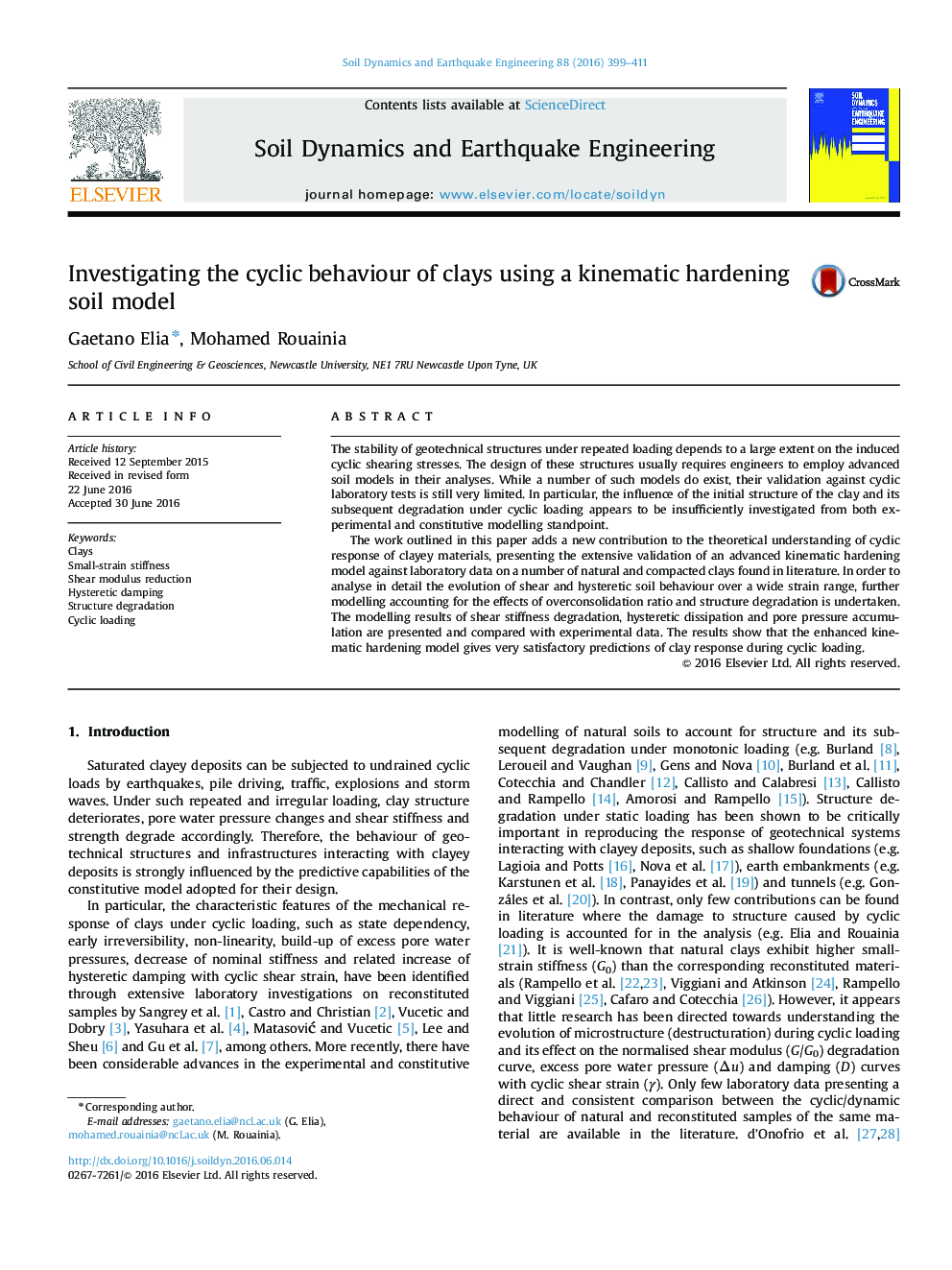| Article ID | Journal | Published Year | Pages | File Type |
|---|---|---|---|---|
| 303861 | Soil Dynamics and Earthquake Engineering | 2016 | 13 Pages |
•The work contributes to the theoretical understanding of cyclic response of clays.•An advanced kinematic hardening model is tested under cyclic loading conditions.•The evolution of shear and hysteretic clay behaviour is parametrically investigated.•The validation of the advanced soil model against laboratory data is presented.•The predictive capabilities of the advanced model are highlighted.
The stability of geotechnical structures under repeated loading depends to a large extent on the induced cyclic shearing stresses. The design of these structures usually requires engineers to employ advanced soil models in their analyses. While a number of such models do exist, their validation against cyclic laboratory tests is still very limited. In particular, the influence of the initial structure of the clay and its subsequent degradation under cyclic loading appears to be insufficiently investigated from both experimental and constitutive modelling standpoint.The work outlined in this paper adds a new contribution to the theoretical understanding of cyclic response of clayey materials, presenting the extensive validation of an advanced kinematic hardening model against laboratory data on a number of natural and compacted clays found in literature. In order to analyse in detail the evolution of shear and hysteretic soil behaviour over a wide strain range, further modelling accounting for the effects of overconsolidation ratio and structure degradation is undertaken. The modelling results of shear stiffness degradation, hysteretic dissipation and pore pressure accumulation are presented and compared with experimental data. The results show that the enhanced kinematic hardening model gives very satisfactory predictions of clay response during cyclic loading.
